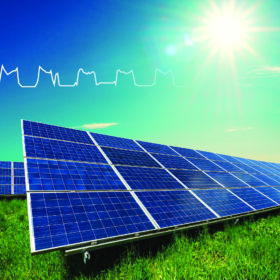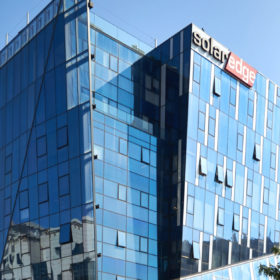Brazil’s faltering manufacturing ambition
A binational integrated solar industry project, announced just over a year ago, aims to build a vertically integrated solar manufacturing industry along the border between Brazil and Paraguay. But the project is now on hold pending an update and reassessment by its new managers.
PV system prices fell 8.9% in Brazil in the first six months of the year
The cumulative capacity of 5 MW-or-smaller solar systems has reached 958 MW in Brazil, according to consultancy Greener. Around a third of that capacity was installed in the first half of this year, with projects relying on half-cell and PERC modules making up the largest share.
SMA reports losses for first half of 2019
For the second half of the year the German inverter producer expects a significant increase in revenues and earnings, mainly due to high order intake. It also confirmed its forecast for the full fiscal year, despite declining sales and earnings in the first six months of 2019.
Wood Mackenzie expects more consolidation in inverter business
The research firm says the value of the global inverter market will continue to decline until 2024, even though shipments will likely increase. China’s recent policy changes have increased pressure on prices, which will contribute to greater consolidation in the sector.
Indian government invites solar research proposals
The MNRE has invited proposals for high-efficiency perovskite solar cells, solar panel recycling, hybrid inverters and new applications that combine solar and storage, among others.
SolarEdge posts strong revenue increase, slight drop in net profit
The Israeli inverter manufacturer saw its net profit decline 4% year-on-year to $33.1 million in the second quarter, despite shipping 1.3 GW and seeing a 43% increase in turnover. Gross margins were affected by the increase in U.S. tariffs on China made products.
Chinese investment in renewables soars under Belt & Road initiative
A report by Greenpeace has found in the five years since China announced the continent spanning ‘One Belt, One Road’ infrastructure plan, investment in Belt & Road countries has supported 12.6 GW of wind and solar power generation capacity. That compares with just 450 MW which came online in the territories before 2014. The initiative has also supported 68 GW of new coal capacity.
The weekend read: Transistor transition
In pursuit of a lower levelized cost of energy for the next generation of inverters, some manufacturers have turned to acquiring considerably more expensive semiconductors. While this may sound like a misstep at first, the trick could be pulled off — though not easily, and not always — yet.
Interview: Fimer CEO Filippo Carzaniga discusses acquisition of ABB inverter business
After the bombshell news this week, the Italian inverter manufacturer’s CEO spoke to pv magazine about the future of ABB’s R&D hubs, manufacturing sites, hundreds of employees and of course Fimer’s outlook.
ABB exits solar inverter business
This Swiss giant is following a trend as large multinational high-tech companies see their role as redesigning infrastructure rather than supplying inverters at ever lower margins. Schneider Electric has pulled out of large scale solar, Siemens’ Kaco acquisition and Junelight launch show increasing interest in the C&I and residential markets, and GE is likely to divest its power conversion business due to low profit margins in that sector.









